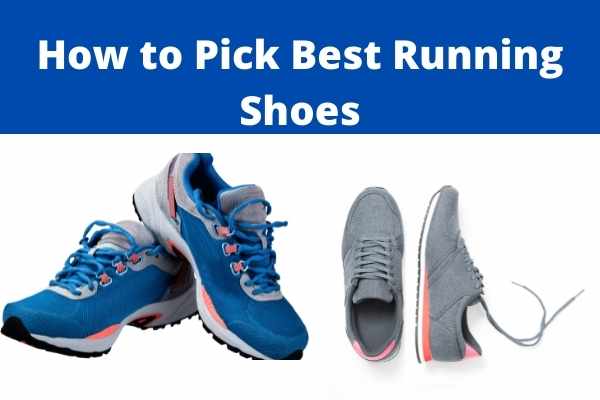A little confused just because you can’t figure out the Best Running Shoes for Long-Running? Don’t worry! We will provide you with the perfect guidance for selecting your next shoe.
We have brought forward several significant factors that should be kept in mind. Let us go through them one by one.
The things to Check Before Picking the Best Running Shoes for Long-Running
Size and Width:
An essential point that has to be under consideration is, basically, the size of the shoe. The footwear business can sometimes be daunting when you have mistakenly bought a shoe that does not fit your feet.
The reason that it’s listed as the first factor is simply due to the majority of complaints regarding this particular issue.
Whenever you buy footwear, keep in mind the correct size of your feet to save yourself from this trouble. Besides this, Width also plays an integral part in deciding your future shoe.
Some people desire narrow feet, while some go with wider ones. It depends on the buyer, which suits him better.
Also read: How to dry shoes
Breathability:
The second major factor is the level of breathability. It is defined as how easily the shoe lets moisture pass through to the outer atmosphere under specific weather conditions.
It should be noted that this quality is mainly dependent upon the upper of the shoe. Upper made out of fabrics simply allows more water vapors to pass, enabling higher breathability.
Undoubtedly, The better the breathability, the better the comfort.
Also read: Stop Shoes from Squeaking
Cushioning:
Cushioning is the amount of force that a shoe can absorb when it strikes the ground. It relieves the strain con your body by limiting the impulse when touched to the ground.
Moreover, it is dependent on the midsole of the shoe. A good quality midsole provides a better-cushioned environment and adds to the runner’s comfort.
Besides a cushioned midsole, some shoes also carry a removable sock liner that provides an extra bit of cushioning.
For a smooth stride, runners tend to buy heavily cushioned shoes to save them from possible injury.
Also read: Make shoe slip-resistant
Heel-Counter:
The heel counter also plays a vital role as it provides stability and adaptability to the feet and also increases the life of the shoe.
The main fashion of the heel counter is to absorb shocks from the ground and nullify its effects on the body.
Without reinforced heel counters, the shoe fails to retain its shape reducing the support to the feet. It is placed at the back of the shoe, where the heel bone sits.
A high-quality heel counter is made of thermoplastic in sports shoes and either a thin plastic or treated cardboard in dress shoes.
Also read: Stop Shoes from Squeaking.
Heel-Toe Drop:
The next factor to look out for is the heel-to-toe drop of a shoe. It is known as the difference between the cushioning beneath the heel to the cushioning beneath the forefoot of the shoe.
The heel-to-toe drop does not matter for those beginners who have just started running, but for a regular runner, it turns out to be quite a factor.
It is applicable when one wants to broaden his running shoe lineup. For those athletes who land heel first to the ground, a heel-to-toe drop over 7mm (high) is considered optimal, while for those runners who lander with their forefoot first, common descent is better.
You need to find out how much heel–to–toe drop works best for you.
Pronation:
Do your feet carry a natural line of movement? The last important factor to look out for is the pronation of the shoes. Pronation is linked with your foot movement when it touches the ground.
If the outer edges of your heel move inward, that means you overpronate, which may prove dangerous for your feet.
It is found that over-pronation causes plantar fasciitis, shin splints, and an ankle sprain. The outsole is responsible for the pronation of the shoes, designed in such a way as to provide maximum support.
The best practice is to identify whether you overpronate. Then choose your next shoe.
FAQs
How do you tell what type of running shoe you need?
A comfortable shoe is your best bet. Feet swell as you run, and the shoes will soon feel snugger than they did when you first set off, so don’t buy one that feels too loose or too narrow to start with.
Medium-level cushioning for support and under-foot protection is a good compromise position. Still, suppose you have delicate feet or high insteps. In that case, a light shoe may be more appropriate – it’ll reduce any peck injuries from the ground rushing past your toes because there’s less material in the sole to wrinkle up and obstruct movement.
A firm heel’s a good thing for stability – this prevents over/under stepping on landing – but it can lead to overheating if it features an isolation system.
How long do running shoes last for heavy runners?
If you’re running more than 10 miles a week, your shoe is going to wear out. Most people don’t know this right off the bat because they will have their old shoes for about 2-3 months before at first feeling any discomfort. If you go past three months with an old shoe, you’ll start getting aches and pains in your foot that are likely caused by something wrong with the shoes rather than just simple fatigue or stress on your feet.
At that point, it’s time to replace them, even if they still look new on the outside. Your body is constantly pushing up against 15-25 pounds of force with every step, so it’s not uncommon for there to be significant wear after 10 miles each.
Do running shoes make you run longer?
They are running shoes that act as a dampener to absorb the shock of each step. They also serve as an extra layer of padding so your foot doesn’t hit the hard ground, spreading out the impact and taking weight off certain areas to help prevent injuries.
That said, running shoes won’t make you faster than you are, but they may well help keep this runner running for longer! No scientific evidence has ever shown that running shoes can increase performance or endurance in any way specific to runners.
So it’s not like you’ll suddenly wake up with more stamina if these things magically appeared on your doorstep (although who knows- maybe one day!).
Are cushioned running shoes bad for you?
Yes. Cushioned running shoes are bad for you because they run shoes with thick, padded soles, which might be more comfortable for your feet, but the thicker sole is less able to bend and absorb shock.
Cushioned running shoes will result in an inefficient stride that slows you down, reduces endurance, produces extra torque on joints, and adds stress to the foot’s arch too. A motion analysis study of 20 runners found that cushioning doesn’t help prevent injuries either – it may increase injury risk through the calf area of your leg.
A “barefoot” running shoe will have a thinner outsole that allows for more natural movement while also requiring a lot of muscle power, so they don’t get lazy.

